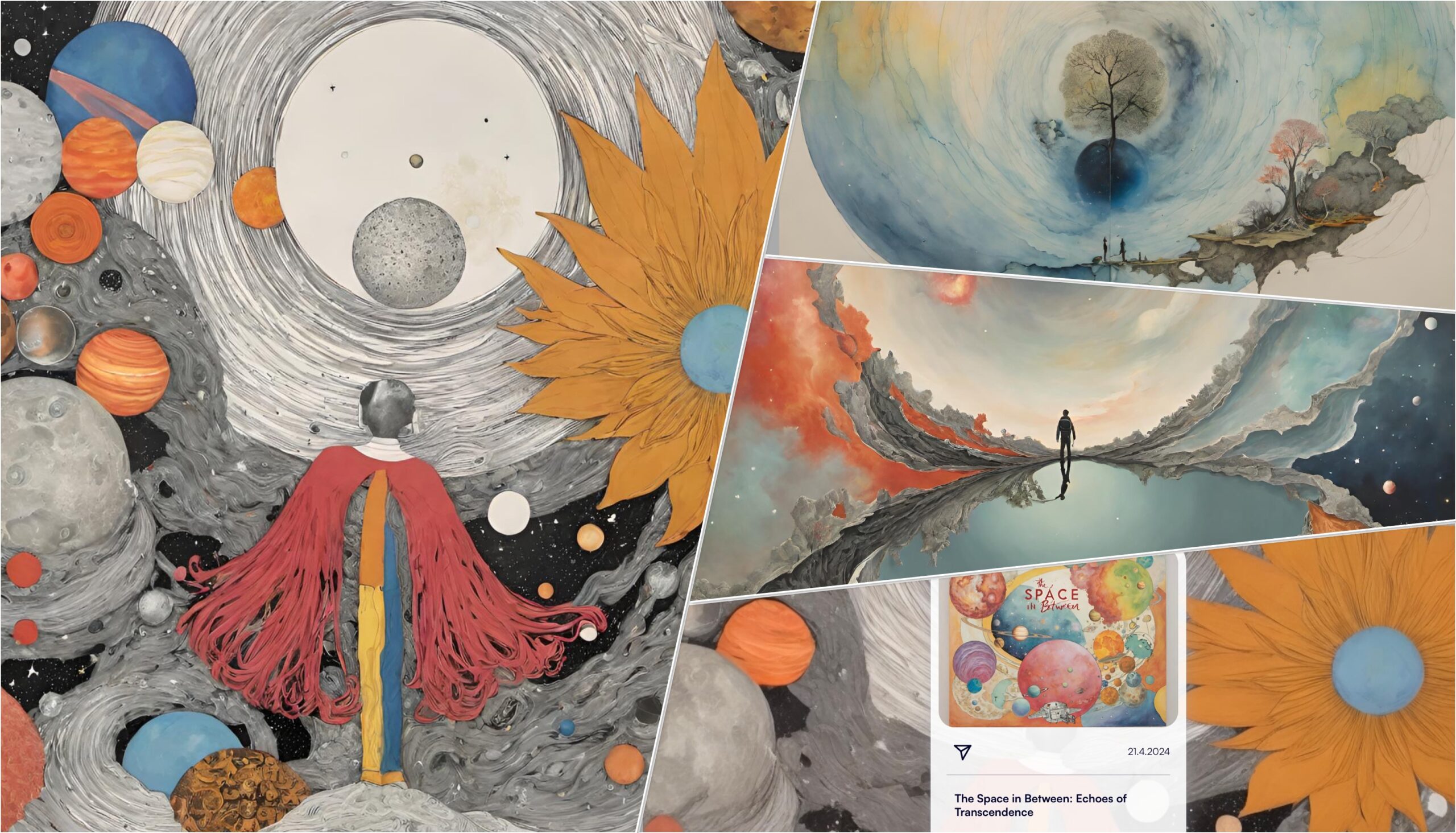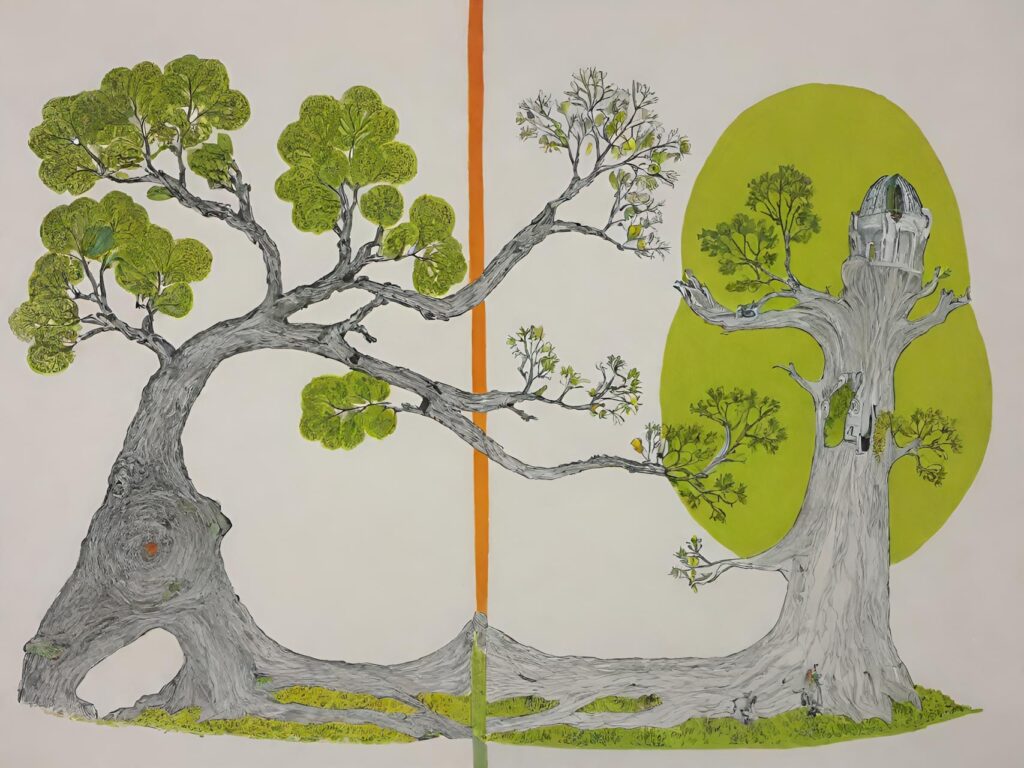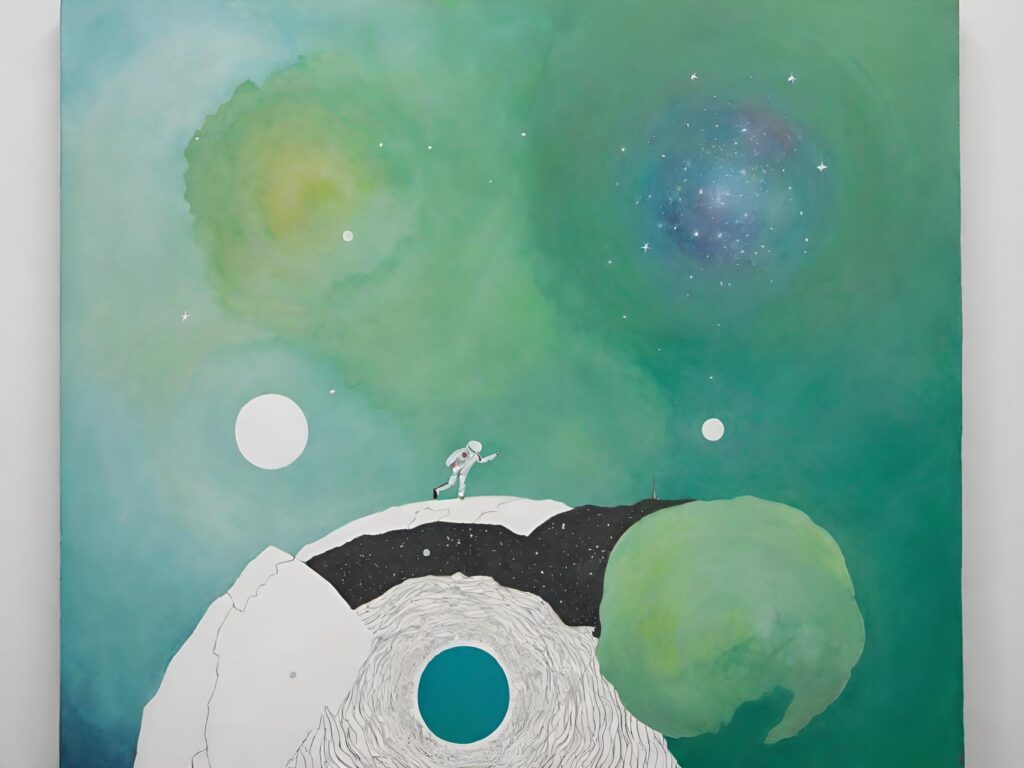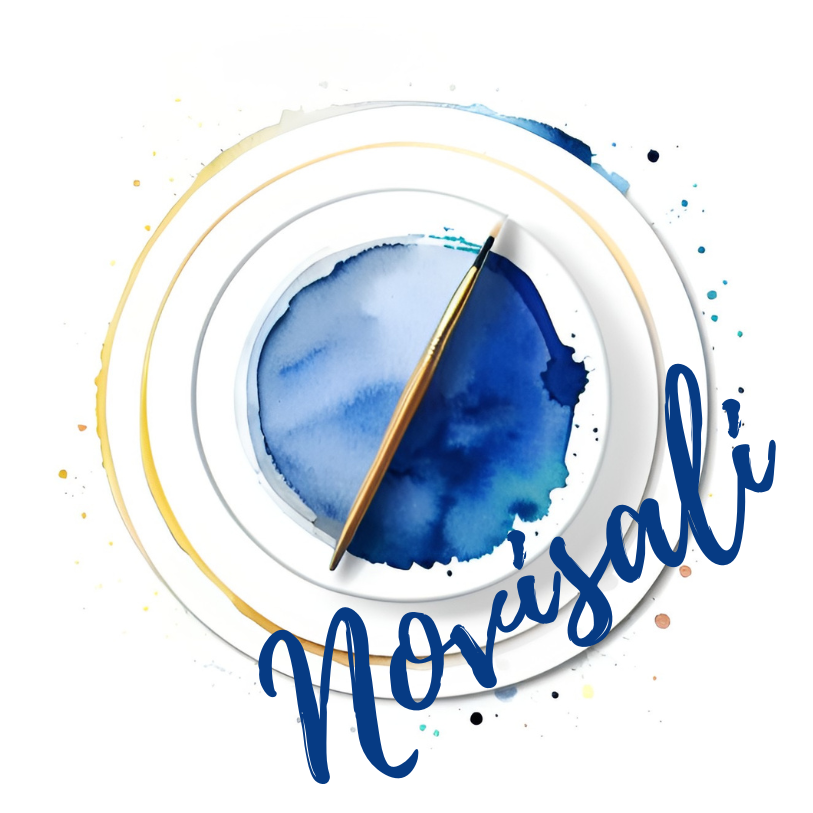
In a world where rapid technological advancements and complex geopolitical and sustainability challenges intersect, the need for reflection and visionary leadership has never been more critical. These periods of transition—these spaces in-between—are where real transformation can occur, repositioning businesses and societies for a sustainable future.
Embracing AI with Awareness and Strategy
An INSEAD survey of over 1,200 respondents shows a broad engagement with generative AI (GenAI), with most using it in both personal and professional spheres. The enthusiasm is tempered by concerns about potential misuse rather than job loss, with a balanced view on whether AI benefits individuals or organizations more.
Wharton Professor Ethan Mollick, in his new book “Co-Intelligence: Living and Working with AI,” proposes four rules to better integrate AI into our daily lives and businesses:
- Include AI in your projects to explore new challenges.
- Be the human in the loop, emphasizing the irreplaceable value of human insight.
- Humanize your interaction with AI, directing its behavior positively.
- Anticipate better AI models in the future, preparing for continuous technological evolution.
These guidelines not only help in harnessing AI’s potential but also in managing its rapid development and integration into our workflows and decision-making processes.
Sustainability as a Business Imperative

The Climate Governance Initiative, along with Kantar’s survey, reveals that 86% of board directors view climate change as a business opportunity, with 93% believing they can significantly influence their organization’s direction on this critical issue. This perspective shifts the narrative from climate change as a challenge to a catalyst for innovation and growth.
The Japanese Concept of Ma and Space

The Japanese concept of Ma, signifies essential pauses in time and space that allow life to breathe and connect, highlighting that growth is hindered without these breaks. Japanese have four different words for “space”—wa, ba, tokoro, and ma—which provide profound insights into managing transitions and fostering innovation:
- Wa (和) emphasizes creating harmonious spaces that enhance collaboration.
- Ba (場) is about generating new knowledge and innovation.
- Tokoro (所) connects us with our broader environment, grounding our actions in contextual awareness.
- Ma (間) highlights the importance of pauses and spaces—intervals that allow for reflection, connection, and growth.
Reflection Framework based on The Space In Between
Incorporating these principles into personal leadership and board strategies can significantly enhance an organization’s capacity for innovation, while ensuring that developments are both sustainable and ethically sound. It encourages a balance between rapid technological advancement and thoughtful consideration of broader impacts, fostering a sustainable future that leverages the best of AI technology. Linking these space in between across leadership, board work, sustainability, and generative AI creates a multidimensional reflection framework that can enhance personal and organizational effectiveness and innovation. Here’s how these concepts can be integrated into a cohesive strategy:
- Wa (和) – In leadership and board work, wa promotes a culture of cooperation and harmony, essential for tackling the complex challenges of sustainability and ethical AI implementation. By fostering a team environment where all members feel valued and understood, organizations can more effectively align on sustainability goals and ethical AI practices, ensuring that decisions reflect a collective commitment to these principles.
- Ba (場) – Ba can be envisioned as a creative space for problem-solving and innovation, where leadership and boards can engage with experts in sustainability and AI. This involves setting up interdisciplinary teams and think tanks that brainstorm and test new ideas, facilitating a continuous flow of innovation in sustainable practices and AI development. This space becomes a laboratory for exploring how AI can be used to optimize resource use, reduce waste, and enhance data-driven decisions in sustainability initiatives.
- Tokoro (所) – Tokoro emphasizes the importance of contextual awareness. For leaders and boards, this means understanding the broader environmental, social, and technological landscapes in which their organizations operate. This contextual insight is crucial for integrating sustainability and AI into corporate strategies effectively. It involves tailoring approaches to both local and global scales, ensuring that sustainability initiatives and AI applications are relevant and responsive to the specific needs and challenges of different markets and communities.
- Ma (間) – In the fast-paced realms of sustainability and AI, ma advocates for taking thoughtful pauses to reflect on the long-term impacts of decisions. For leadership and boards, this means incorporating periods of reflection before finalizing strategies or deploying new technologies. Such pauses allow for a thorough assessment of potential environmental, social, and ethical consequences, leading to more sustainable and responsible AI implementations.
Integrating these concepts into leadership and board strategies provides a holistic framework that not only enhances the organization’s capacity for innovation but also ensures that such innovations are sustainable and ethically sound. This approach encourages a balance between rapid technological advancement and the thoughtful consideration of its broader impacts, fostering a sustainable future that leverages the best of AI technology.
Virtual Art Exhibition – The Space In Between
Let the Virtual Art Exhibition, “The Space In Between: Echoes of Transcendence “, with related reflection guidance and deep dives, inspire you to find opportunity, reflection and beauty in the gaps, the pauses, and the quiet moments where the future is waiting to be shaped. As we navigate these transitions, we must remain mindful of the spaces that allow for reflection and growth—spaces that are not just physical but deeply woven into the fabric of our decision-making and strategic planning. The reflection guide available in the Art Exhibition is partly building on the Ma concept.
See the Exhibition The Space In Between (clic on picture below)

The Artworks are currently available for ordering – only one of each artwork will be issued and sustainably produced and delivered via local production hubs near destination of buyer. Read more here
Conclusion
The crucial transformations we seek occur in the transitional spaces—from unsustainable practices to a sustainable future, from routine automation to innovative solutions, and from individual focus to collective empathy. It is in these spaces in-between that true innovation and magic can emerge. By embracing these pauses, we allow ourselves the time and space needed to breathe, feel, and connect, setting the stage for meaningful change and progress.
Presencing Guide
by Zen Teacher and Peace activits Thich Nhat Hanh:
Breathing in, I release the tension in my body.
Breathing out, I smile.
Breathing in, I’m aware of my heart.
Breathing out, I smile to my heart.
Audio Recommendations
Music:
Listen to the Song “In the space between the lines i find my freedom”:
The Space in Between Playlist on Spotify
Podcasts: The Space In Between Podcast Episodes on Spotify
Reading Recommendations
Check out these Books, each complements the essence of “The Space In Between”, inviting you to explore the unseen forces and the transformative power of our dreams and visions for the future.
- “Co-Intelligence: Living and working with AI” by Ethan Mollick, Wharton. Mollick explores the transformative role of AI as co-worker, co-teacher, and coach in business and education. He urges us to collaborate effectively with AI to enhance our capabilities without compromising our identity. This book highlights the potential of AI to create a better future, emphasizing the importance of harnessing this technology responsibly.”
- “Sustainability Leadership: A Swedish Approach to Transforming Your Company, Your Industry, and the World” by Henrik Henriksson and Elaine Weidman Grunewald offers a pragmatic yet optimistic guide for corporate leaders. The authors candidly address the complex challenges inherent in adopting sustainable practices, while emphasizing the significant opportunities that sustainability can bring. They present a structured three-step model designed to guide organizations through a transformative journey towards ambitious, far-reaching combined business and sustainability goals.
- “The Upside of Uncertainty” by Nathan and Susanna Furr, INSEAD – The Furrs provide a compelling guide to embracing uncertainty and leveraging it as a force for innovation and growth. Drawing on extensive research and interviews, they show how uncertainty can be a source of possibility and progress, resonant with the exhibition’s exploration of the unknown and the potential it holds for shaping the future.
- “The Future of Humanity” by Michio Kaku – Kaku explores the potential futures of humanity as we venture into space and develop new technologies, resonating with the exhibition’s themes of imagining and creating future possibilities.
- “Talking to Strangers” by Malcolm Gladwell – Gladwell examines the complexities and misunderstandings that arise when we interact with strangers, highlighting the importance of communication and understanding in our interconnected world, a theme that underpins the exhibition’s exploration of connections and gaps.
- “Long Path” by Ari Wallach – Wallach introduces a forward-thinking approach to planning and decision-making, emphasizing long-term thinking to address today’s challenges and opportunities, echoing the exhibition’s focus on shaping tomorrow.
- “The Art of Possibility: Transforming Professional and Personal Life” by Rosamund Stone Zander and Benjamin Zander – This book explores the synthesis of creativity and practicality, offering a new perspective on how to approach challenges and opportunities in both professional and personal realms, resonant with the exhibition’s theme of shaping future realities through imagination.
- “Imagine: How Creativity Works” by Jonah Lehrer – Lehrer delves into the science of creativity, providing insights into how individuals and organizations can foster innovation. It’s a great complement to the exhibition’s focus on the boundless realms of imagination.
- “Life is in Transitions” by Bruce Feiler – Feiler provides a powerful framework for navigating the inevitable changes and transitions in life, offering insights that mirror the exhibition’s focus on growth and rebirth.
- “Living the Artist’s Way” by Julia Cameron – Cameron’s seminal guide to unlocking creativity advocates for exploring one’s artistic potential, aligning with the exhibition’s encouragement of creative exploration and envisioning futures.
- “The Art of Living: Peace and Freedom in the Here and Now” by Thich Nhat Hanh. Zen Master Thich Nhat Hanh explores the path to peace and freedom through mindfulness, emphasizing living fully in the present moment. His teachings, focused on joy and serenity in the now, align with the exhibition’s themes of reflection and the beauty of the present.
Fiction: - “The Night Circus” by Erin Morgenstern – A novel that brings to life an enchanting world where competition, love, and magic blend seamlessly. Its vivid portrayal of an imaginary circus echoes the exhibition’s theme of exploring the nuanced spaces between reality and imagination.
- “Cloud Atlas” by David Mitchell – Through interconnected stories spanning different times and spaces, Mitchell explores how individual actions can ripple through the past, present, and future. It resonates with the idea of dreams and visions influencing our world, as presented in “Whispering Visions.
Poetry: - “The Sun and Her Flowers” by Rupi Kaur – Kaur’s collection of poems explores growth, healing, ancestry, and honoring one’s roots—themes that beautifully align with the rejuvenation and rebirth symbolized by spring in the exhibition.
- “A Thousand Mornings” by Mary Oliver – In this collection, Oliver contemplates nature, love, and the human spirit, echoing the exhibition’s invitation to reflect on the profound and often unseen forces that shape our lives.
Poem
Poem: In the Echoes Between
In the silence between heartbeats of the night,
where dreams blur the lines of the tangible light,
we stand in the gaps where futures are spun,
the canvas of possibility, under the undone sun.
Softly, the universe in these spaces does speak,
in the pause between words, where mysteries peek,
stillness cradles the seeds where new worlds begin,
each moment brimming with the might-have-been.
Look deeper, find the rhythm of the void,
the graceful stillness of ‘ma’, where gaps are enjoyed,
holding beauty in its silent embrace,
crafting emptiness with a celestial grace.
From pause to purpose, the magic unveils,
in the lingering quiet, where the slow breath sails,
each hiatus a brush of light, painting dreams,
on the stark canvas of the cosmos’ unseen schemes.
The future whispers, from the old to the redefined,
where AI weaves thoughts in the dance of the mind,
together we sculpt a chorus of evolution,
melding essence, in the cauldron of revolution.
Here, in these thin places, creation expands,
a breath, a still, a leap to new lands,
in these spaces, the calls of transformation resound,
in “The Space in Between,” where truths are found.
Beneath calm waters, a revolution quietly stirs,
preparing us for what will be, as the future blurs,
the quiet before the vibrant dance of existence,
where calm gathers force in the hush of persistence.
Celestial paths are drawn in silent wonder,
charting courses through the cosmic yonder,
each celestial body narrates a cosmic tale,
inviting us to sail the stellar gale.
Within these quiet moments, connect and see,
the woven threads of our shared tapestry,
how each solitary path meets and twines,
in the gallery of life, where destiny aligns.
Echoes of transcendent calls, in each pause, a role,
in every hush, a melody, a whispered goal,
here in the space between, where spirits soar,
we discover the profound, the core, the lore.
In this continuum, where moments hesitate and flow,
ancient whispers in new realms quietly glow,
between the frames, untold stories await,
beyond the visible, through the covert gate.
Through these spectral gaps, ethereal paths are made,
linking soul to soul, and the grand plans laid,
each silence a sanctuary, each break a sacred land,
where the subtle murmurs of being grandly expand.
Art, the quiet envoy of the in-between,
captures the ephemeral, the scarcely seen,
with strokes of genius, the emptiness breathes life,
igniting visions that urge us to thrive.
In these liminal spaces, our truths entwine,
amidst the shared breaths of the divine,
a symphony of humanity, played in quiet colors,
unveiling the beauty that silence uncovers.
The magic of transition, a broad, clear stage,
where the soft echoes of becoming gently engage,
between what was and what may be, lies true art,
the crescendo of silence that speaks to the heart.
In this gallery of pauses, our views transform,
as the ordinary veils begin to reform,
each piece a gateway to a deeper view,
casting light on the shadows, making old new.
The interstice, a realm where wonders persist,
a gentle cradle for peace’s growing tryst,
where reflection flourishes and insights unfurl,
in the sacred space of the gallery’s swirl.
Here, in the whispers of the space in between,
lies the power to alter, to foresee, to glean,
a universe waiting in every silent breath,
where art meets essence, and life meets depth.
So, step forth, let each silence instruct,
in the quiet, listen, let each echo conduct,
within these revered gaps, let your spirit fly,
in the space in between, find yourself, reach the sky.
Upcoming Events and Programs
Previous Blogposts
About Novisali
This blog post was originally shared at the blog Digoshen and of the Digoshen & Boards Impact Forum Chair and founder www.liselotteengstam.com, with the artist name Novisali.

Novisali, (alias Liselotte Engstam), is besides her roles as professional board member and advisor, a multi-media artist, with a curious, explorative mind and an ambition to learn and extend art experiences to current and new audiences using both traditional and new digital mediums. More information and exhibitions can be found via Novisali.com
